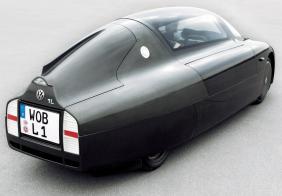Transition Plans
The end of the fossil fuel era and the beginning of the sustainable
energy era

The people of the United States will
soon realize that the era of cheap fossil fuel is ending soon. They may learn of
this from political leaders, journalists, scientists, the Web--the
sooner the better. Once Americans accept the existence of the oil
depletion problem, they can apply their intelligence and ingenuity toward
a transition to sustainable energy.
The Busby Report is good example
of a transition plan although it applies to the United Kingdom. [1]
Life after the Oilcrash also
describes the transition. [2] The
author is from California.
Eating Fossil Fuels is an essay
painting a terrifying view of the future. [3]
It is well written and well researched.
Here are some possible scenarios for
the transition to the era of sustainable energy;
Plan 1: The Smooth
Transition Plan

Here is a rough sketch of a hundred
year plan that attempts to make a smooth transition to sustainable energy.
It is sheer hubris to outline such a plan but any plan, even if imperfect, is better
than no plan. The timeline is imprecise and suggests an
ongoing process. It is mind boggling to realize that the transport system
must be replaced by a system that does not use oil. Americans must be
willing to "plant a tree they won't sit under."
Step 1 (timeline: right now)
 The
government passes legislation to tax gasoline and diesel fuel at European
rates. This is unfair to poor people, but that could be redressed by a tax
adjustment. Tax jet fuel. Tax any new passenger vehicles (especially
including SUVs) that do not get good mileage. Outlaw recreational vehicles
of all kinds. The president explains to the people that it is patriotic to
conserve oil and gas. Enforce 55 mph on all highways. The
government passes legislation to tax gasoline and diesel fuel at European
rates. This is unfair to poor people, but that could be redressed by a tax
adjustment. Tax jet fuel. Tax any new passenger vehicles (especially
including SUVs) that do not get good mileage. Outlaw recreational vehicles
of all kinds. The president explains to the people that it is patriotic to
conserve oil and gas. Enforce 55 mph on all highways.
Conservation is not the final solution
but conservation buys time while a long term solution is implemented. The
conserved fuel may be needed to implement the long term solution.
Women around the world are empowered to
control the reproductive capacity of their bodies in order promote
population control. Overpopulation makes all problems worse.
Step 2 (timeline: one year)
Alaska National Wildlife Refuge (ANWR)
oil is not exploited--it
will be much more valuable in 50 or 100 years. Since truck transport
consumes four times more fuel (on a ton mile basis) than rail transport,
use of railroads is expanded. Carpooling, public transportation, and
bicycles also reduce oil use. Funding is expanded for nuclear fusion
research and development. The technical difficulties are immense but
success means almost limitless power, no green house gasses, and very
little radioactive waste.
Step 3 (timeline: 5 years)
Use of oil and gas for electricity
generation ends. Wind power, solar power, and tidal power make up the
deficit. Better light sources and more efficient refrigerators help also.
Some cities have automobile free areas as Europe does now. Coal and
nuclear are heavily used although the environmental costs are high. It is
now fashionable to conserve energy.
Step 4 (timeline: 10 years)
The Internet actually begins to replace
automobile-centric shopping malls. Amazon.com is the prototype for the new
fuel-efficient system for distribution of goods. This was supposed to
happen in 2000. Many new cars will have three cylinder diesel engines and
some will be hybrids. New nuclear power plants begin supplying elecitricty,
but many old ones must be shut down as they are well past retirement age.
Bioreactors that produce hydrogen and methane from solar energy are
investigated.
Step 5 (timeline: 25 years)
Railroads are electrified. Oil and gas
are very expensive and usage is less than half of the peak. Biomass
generated methane makes a significant contribution to the natural gas
supply. Nuclear power provides 40% of all electricity, up from 20% on
2003. (Nuclear power provides 70% of the electricity for France in 2003.)
Construction of a full scale fusion reactor for electricity begins. There
is widespread recognition that the earth can not sustain the10 billion
people that live on the earth. Population control becomes a priority.
Step 6 (timeline: 50 years)
 Carbon
dioxide content of atmosphere peaks. Sea levels continue to rise. The
ultimate fate of Florida, Bangladesh, and other low lying areas is still
debated by scientists. The population of world starts to decline due to
universal empowerment of women. Large areas of the southwest are devoted
to solar farms that produce electricity, hydrogen, and methane. Cities are
no longer automobile-centric. Automobiles weigh much less and they get
very good mileage. (Volkswagen has a prototype that weighs only 600 pounds
and gets 239 miles per gallon.) People often walk to jobs, neighborhood
grocery stores, restaurants, shops, etc. Air pollution is much reduced.
The obesity, diabetes and asthma pandemics recede. Ocean going ships, air
travel, and agriculture still require oil. ANWR oil is finally utilized. Carbon
dioxide content of atmosphere peaks. Sea levels continue to rise. The
ultimate fate of Florida, Bangladesh, and other low lying areas is still
debated by scientists. The population of world starts to decline due to
universal empowerment of women. Large areas of the southwest are devoted
to solar farms that produce electricity, hydrogen, and methane. Cities are
no longer automobile-centric. Automobiles weigh much less and they get
very good mileage. (Volkswagen has a prototype that weighs only 600 pounds
and gets 239 miles per gallon.) People often walk to jobs, neighborhood
grocery stores, restaurants, shops, etc. Air pollution is much reduced.
The obesity, diabetes and asthma pandemics recede. Ocean going ships, air
travel, and agriculture still require oil. ANWR oil is finally utilized.
Step 7 (timeline: 100 years)
Fusion reactors become economic and
widespread. The fission era is over, the fusion era starts. Oil and gas
are essentially gone. Coal is little used. Earth begins to cool. Sea level
stabilizes. Most automobiles get power from roadside supplied electric
power. They are automated and do not require drivers. Liquefied methane
has replaced oil wherever a compact source of energy is required, but it
is very expensive and it is used sparingly.
Plan 2: A Bad Plan

This might be called the "market-based
approach" or the "politics as usual approach."
Exploit all means to discover and produce oil and
gas. Environmental concerns carry some weight but economic concerns carry
more weight. ANWR oil is exploited. CAFE standards are encouraged but not
if it causes pain to domestic automakers. Of course, no administration can
increase the federal gas tax without being voted out of office.
Iraq has the second largest oil reserves in the
world and the most underutilized. No effort is spared to exploit this
resource. In five years it should be possible to produce enough Iraqi oil
to break the OPEC cartel. Saudi Arabia must have money from oil to survive
and so they must sell oil at the market price. The resulting low cost oil
should keep the economy strong and the Republicans in power for 10 or 12
years.
But this is a bad plan because it lacks foresight.
Rapidly exploiting the last of the earth's oil means that the inevitable
plunge at the end will be fast. Americans would be bequeathing to
their children a nation with a nonfunctioning transportation system and
the resulting economic chaos.
Plan 3: An Even Worse Plan

This plan combines Plan 2 with American
military might.
The United States is undeniably the world's only
superpower. American military is without question the most formidable in
the world. At the present time, the U.S. has a strong military presence in
Iraq and in Afghanistan. In ten years the Middle East will be the primary
source of oil for the entire world, a world still very dependent on oil.
A Middle Eastern country (or countries) might try to
conserve its oil resource to its own economic advantage. Or a Middle East
country might fall to an Islamic or popular uprising. In any case, there
would be an interruption to the flow of oil. That would set the stage.
The United States military might be tempted to
invade and to occupy another Middle East oil producing country to restore
order and the flow of oil. Sabers have already been rattled at Iran.
That would put the U.S. in de facto military control
of the Middle East and its oil. But that is an untenable position because
the same region is home to 1.1 billion enraged Muslims. There would be
conflict. It is difficult to know what form the conflict would take, but a
sudden loss of Middle East oil seems likely.
This is the worst plan for several reasons. The
military solution is very expensive in terms of lives, money and world
goodwill. Military adventurism cannot increase the amount of oil in the
earth. It is clear that Muslims would continue to object to the occupation
of their countries. Their resentment is not appreciated by the Bush
administration. The outcome has the potential to be cataclysmic.

Future Cars and Future Fuels
"Find the cars of tomorrow...here...now" General Motors had the Volt
but abandoned it. These are much better. Ultimately, people will have to give
up speed, size, comfort and sexiness in their transports.
[1] http://www.after-oil.co.uk/
The Busby Report considers the measures to be taken to ensure
the survival of the United Kingdom in a new century during which the world’s
oil will run out.
[2] http://www.lifeaftertheoilcrash.net/
Life after the Oilcrash says: "Civilization as we know it is
coming to an end soon. This is not the wacky conclusion of a religious
cult, but rather the result of diligent analysis sourced by hard data and
the scientists who study global “Peak Oil” and related geo-political
events."
[3] http://www.fromthewilderness.com/free/ww3/100303_eating_oil.html
Author Dale Allen Pfeiffer says this: "This is possibly the most
important article I have written to date. It is certainly the most
frightening, and the conclusion is the bleakest I have ever penned. This
article is likely to greatly disturb the reader; it has certainly
disturbed me. However, it is important for our future that this paper
should be read, acknowledged and discussed"

|